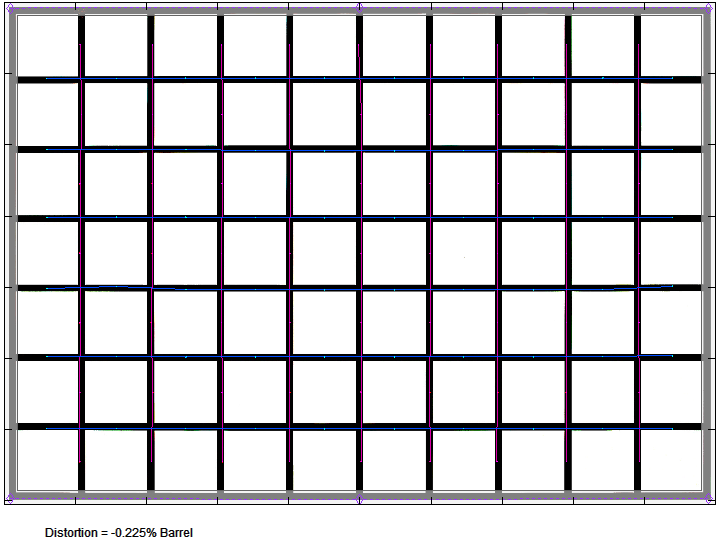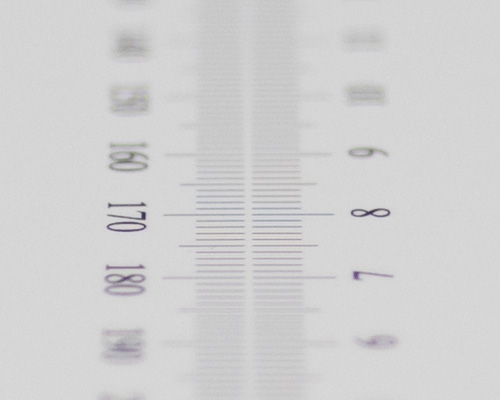|
Canon EF 35mm f/1.4 USM L II - APS-C Format Lab Review - Analysis |
|
Lens Reviews -
Canon EOS (APS-C)
|
|
Page 2 of 2

Distortion
Let's start with the simple things - distortions. No issues here really. A barrel distortion of just 0.2% is irrelevant in most situations.

Vignetting
Full format lenses enjoy a sweet spot effect on APS-C format DSLRs. Therefore the vignetting is substantially reduced at only 0.8EV (f-stops) at f/1.4. The issue is negligible from f/2 onward already.

MTF (resolution)
The sweet spot effect has also a positive impact on the (cropped) resolution characteristic. The center quality is great at f/1.4 and is nothing short of outstanding at between f/2 and f/4. The outer image region is also impressive with good to very good results at max aperture. Stopping down improves the quality till reaching its maximum at f/4-5.6. Images are extremely sharp across the frame here. Diffraction is slightly reducing the quality at f/8 but the lens remains perfectly usable here.
The field curvature is very low.
Please note that the MTF results are not directly comparable across the different systems!
Below is a simplified summary of the formal findings. The chart shows line widths per picture height (LW/PH) which can be taken as a measure for sharpness.
If you want to know more about the MTF50 figures you may check out the corresponding Imatest Explanations

Chromatic Aberrations (CAs)
Chromatic aberrations (color shadows at harsh contrast transitions) are very well controlled showing readings below an average pixel width of around 0.5px at the image borders.

Bokeh
One of the primary usage scenarios for a large aperture lens is to separate the main subject from the background. In such an image the quality of the bokeh (out-of-focus blur) is of major significance. The Canon lens delivers a quite smooth bokeh for a wide angle prime but like most wide-angle lenses it is not perfect here. The foreground is quite buttery whereas the more critical image background is somewhat more harsh when it comes to contrast transitions.
 Out-of-focus highlights are nicely rendered. They show a slight outlining effect at f/1.4 but this effect is gone when stopping down to f/2 already. The inner zone of the highlight disc is smooth with only marginal traces of sub-structures.
Out-of-focus highlights are nicely rendered. They show a slight outlining effect at f/1.4 but this effect is gone when stopping down to f/2 already. The inner zone of the highlight disc is smooth with only marginal traces of sub-structures.

Bokeh Fringing / Longitudinal Chromatic Aberrations (LoCA)
As mentioned in the introduction, Canon uses a "BR" element to reduce axial chromatic aberrations in the EF 35mm f/1.4 USM L II. Bokeh fringing effects are normally a largely unresolved issue - also because they are very difficult to remove during post processing. The good news is that this BR element does make a difference here. You can still spot some purple halos in the front of the focus point and green ones beyond but they are certainly reduced significantly.
In addition, these shots illustrate a focus shift towards the rear the more you stop down. Since the focus point doesn't really lose its focus, it's not really significant enough to show up in most images though.
|
Move the mouse cursor over the f-stop marks below to observe the respective LoCAs
|
| f/1.4 |
f/2 |
f/2.8 |
f/4 |
f/5.6 |
|

|
Sample Images
Sample images can be viewed in the corresponding full format review. The EOS 5Ds R has about the same pixel density so if you crop the sample images to the APS-C format, you should get a very good idea how the lens performs in this format.
Verdict
The Canon EF 35mm f/1.4 USM L II performed fairly well in our full format test but it really shines when used on an APS-C format DSLR. This is not surprising because all the slight imperfections in the outer image field reside outside of the APS-C image frame. Resolution-wise it is tack sharp in the image center. The borders/corner are also impressive and nothing should stop you of getting quality results even at f/1.4. The results are superb when stopped down to f/4-5.6. Lateral as well as axial CAs are very low and this certainly helps to push the subjective quality perception. Image distortions are pretty much absent. Vignetting is just visible at f/1.4 in critical scenes but the issue is already gone from f/2 onward. The quality of the bokeh is quite good. The image background could be a bit smoother. Out-of-focus highlights are generally nicely rendered. The usual "cat's eyes" near the full format borders is no issue in the APS-C scope. A real differentiator is the reduced amount of bokeh fringing which is pretty much better than anything in this class in this respect.
The build quality of the Canon EF 35mm f/1.4 USM L II is pretty much perfect. Top-notch materials, weather sealing, a smooth control rings - it doesn't really get any better than this. The USM AF is silent and fast but the competition is pretty much on the same level nowadays. Speaking of the competition we are primarily talking about the Sigma 35mm f/1.4 DG HSM Art which should be about as sharp at least. The Canon is somewhat better in terms of bokeh though. Another option is the Sigma 30mm f/1.4 DC HSM Art (untested), a native APS-C format lens, which is more affordable still.
|